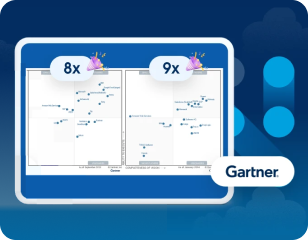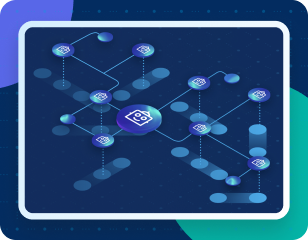Community
Anypoint Connectors (for Mule 3)
Anypoint Connectors are extensions of Mule that let you work with external systems such as Salesforce, ServiceNow, Workday, Twitter, and more to send and receive information from these systems to create something new.
Anypoint Connectors let you connect Mule applications to APIs and resources. You can use connectors within your Mule applications to send and receive data over a protocol, or to and from an API.
You can create applications in Anypoint Studio by installing a connector from Anypoint Exchange, and then dragging the connector to the Studio canvas.
When you add a connector to the start of a flow, it’s known as a message processor or "trigger" because it starts the Mule flow by receiving information from the connector’s resource. For example, when a Salesforce user updates a sales opportunity, the connector application can receive the information and direct it to a database or to another connector for processing.
You can also use the HTTP connector as a message processor so that users can send information to your
Studio application using a web browser, Postman, or the curl command.
The list of Mule 3 connectors in Exchange
provide descriptions and helpful links that help you understand how each works.
You can also use different operations from the same connector in a project. One operation can receive data, another can process the data.
In addition, Exchange provides Mule 3 templates and examples
that let you jump start application development.
|
For Mule 4 connectors, see Connectors and Modules (for Mule 4). |
Compatibility
Mule 3 connectors are compatible with Mule runtime engine versions 3.x and Anypoint Studio versions 6.x
Install a Connector
-
In Anypoint Studio, click the Exchange icon in the Studio taskbar.
-
Sign in to Exchange with your Anypoint Platform credentials.
-
From Anypoint Exchange, click Provided by MuleSoft.
-
Search for the Mule 3 connector and click Install.
How to Use a Connector
You can import additional connectors into your Studio project, or manually create applications using connectors, outside of the Studio development environment, by adding them as Maven dependencies, or including the required connector libraries with your project.
Connector Support Categories
MuleSoft provides different support categories. See the Connector Support Policies documentation for the connector you use.
| Type | Description |
|---|---|
MuleSoft or members of the MuleSoft community write and maintain the Community connectors |
|
MuleSoft Certified |
MuleSoft Certified connectors |
Select |
MuleSoft maintains Select connectors |
Premium |
MuleSoft maintains Premium connectors |
Develop Your Own Connector
You can also create a REST or SOAP API connector, or create your own connectors using Anypoint Connector DevKit. For more information on integration solutions, see the Anypoint Connectors product site.



